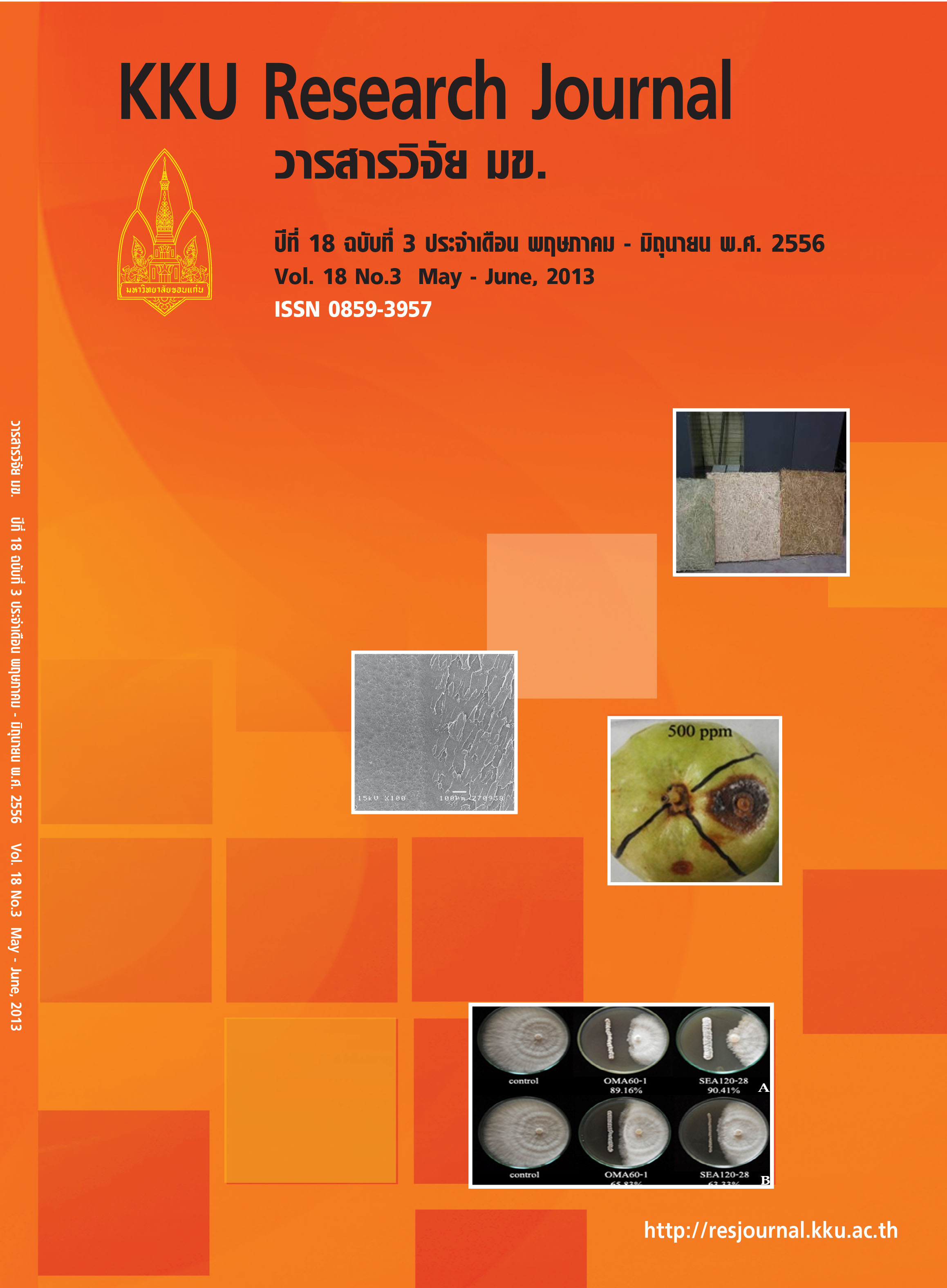Age-related trends in carbohydrate reserves, latex yields, macronutrient contents, chemical compositions and physical-mechanical properties in rubber trees
Main Article Content
Abstract
Rubber trees are cultivated as an economical tree crop for harvesting latex yield and wood products. The objective of this research was to assess the age-related changes in carbohydrate reserves, latex yields and wood properties by comparing five age classes (2, 5, 12, 16 and 26 years old) based on the growth and productivity stages of rubber trees. Total nonstructural carbohydrates in leaves and stem wood varied throughout the harvest season, while the same trends between tree ages were observed. In addition, the significant differences of latex yield and dry rubber content (%DRC) were found in 16-year old trees. Despite differences in macronutrients in all the five tree ages, the total amount of N, K and Ca concentrations seemed to favor the large nutrient components in leaf, stem wood and latex. In the case of chemical and physical-mechanical compositions, there were significant differences among tree ages, however, it was not different in terms of toughness and hardness of wood on the mechanical properties. Although significant differences between some parameters and tree ages were found, the results showed that all these parameters were related to the variation in tree ages. Thus, the factor of age-related trends can be used for making decisions in relation to wood harvesting of rubber trees.
Article Details
How to Cite
Chiarawipa, R., & Prommee, W. (2017). Age-related trends in carbohydrate reserves, latex yields, macronutrient contents, chemical compositions and physical-mechanical properties in rubber trees. Asia-Pacific Journal of Science and Technology, 18(3), 449–463. retrieved from https://so01.tci-thaijo.org/index.php/APST/article/view/82868
Section
Research Articles


